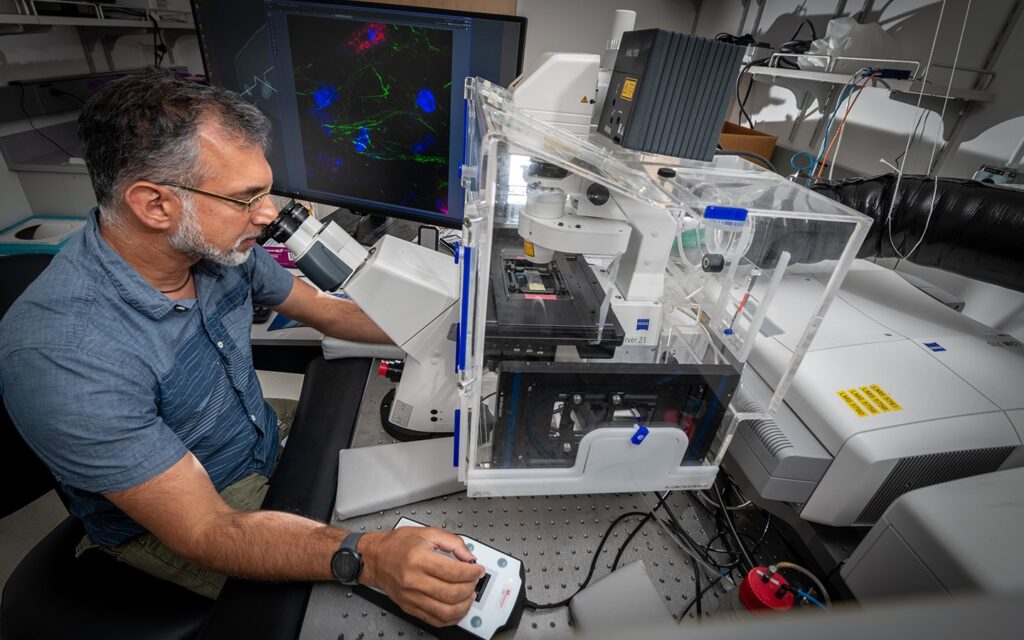Understanding how neurons repair genomic errors sheds light on aging and neurodegenerative disease progression.
Because they do not divide, neurons lack well-defined checkpoint mechanisms to sense and correct DNA damage during replication. Thus, they are at greater risk of accumulating damage and must develop alternative repair pathways to avoid dysfunction. To date, detailed understanding of these pathways has eluded scientists.

A first-of-its-kind study led by Cynthia McMurray and Aris Polyzos in the Molecular Biophysics and Integrated Bioimaging (MBIB) Division integrated cell type– and brain region–specific features of DNA repair in normal brains, setting a benchmark for the field. Their results, recently published in Nature Communications, suggest that DNA damage itself serves as the checkpoint, limiting the accumulation of genomic errors in cells during natural aging. This intriguing finding offers clues to understanding the potential role of unrepaired DNA damage in the progression of neurodegenerative diseases and could help inform the development of therapies.
In collaboration with Zachary Nagel’s lab at the T.H. Chan School of Public Health at Harvard University, the Berkeley Lab researchers employed a bevy of innovative techniques to measure the DNA repair capacity, repair protein expression profiles, and double-strand break levels across brain regions in healthy mice. First, they confirmed the presence of major DNA repair pathway machinery in each of four brain regions: the cerebral cortex, the hippocampus, the cerebellum, and the striatum.
Members of Nagel’s group then determined the capacities of the various DNA repair pathways in the different brain regions using a technique called “fluorescence multiplex host cell reactivation” developed in their lab. In addition, the team at Berkeley Lab imaged neural cells in intact brains using immunofluorescence techniques, allowing distinction between the various cell types in the brain and maintaining a physiological context for DNA damage and repair.
Single-strand breaks generated during DNA repair were observed converting to double-strand breaks and reversibly switching between states in response to oxidation in cultured neurons as well as in living mouse brains. The cell uses the reversible interconversion as a physiological checkpoint to both produce unrepaired double-strand breaks for productive functions, but also restricts them from exceeding tolerable limits. Although oxidative damage originates as part of normal metabolism, the researchers found that high levels of oxidative damage can lead to aging and disease if the accumulation of breaks increases beyond a normal threshold.



